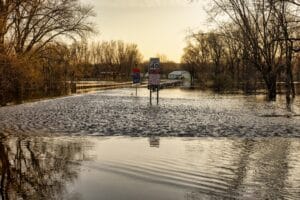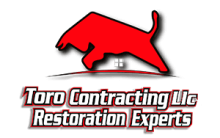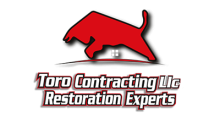Imagine waking up to the sound of trickling water instead of the expected birdsong on a sunny spring morning. You open your door only to find your once quaint garden transformed into a miniature lake. Snowmelt emergencies for homes might not be an everyday worry for many, but for those nestled in snowy regions, they can spell disaster as the winter thaw arrives.
Snowmelt emergencies for homes are situations where the rapid melting of accumulated snow causes unexpected flooding or water damage. This issue is often underestimated until the evidence splashes right on the doorstep. Homeowners facing this challenge frequently encounter soaked basements, weakened foundations, and in worst cases, severe structural damage. Understanding the dynamics from snow to flood is crucial to protecting your most valuable investment: your home.
In tackling snowmelt emergencies for homes, this article will guide you through essential safety measures and practical strategies to not just survive but also prevent the adverse effects of sudden snowmelt. You’ll learn how to identify the warning signs of an impending snowmelt flood, how to prepare your house in advance, and what emergency steps to take as the waters rise. Whether you live in a snowy climate or have recently faced unexpected snowmelt challenges, these tips will arm you with knowledge that could save your home and provide peace of mind.
We’ll delve into smart drainage solutions, the importance of clear gutters, and why roof maintenance matters now more than ever. Plus, we’ll discuss how proper grading around your home can divert harmful water flow, and share advice on safely managing temporary barriers. By the end of this read, you’ll be equipped to turn the threat of snowmelt emergencies for homes into a manageable situation, reducing risk and protecting your family’s sanctuary.
So, as the snow starts to thaw and spring promises new beginnings, join us in transforming potential snowmelt woes into opportunities for proactive home safety. Because when winter’s quiet turns into a sudden flood, the right knowledge might just be the warmth that saves your home.
Key Takeaways
- Snowmelt emergencies for homes occur when rapid snow melting causes flooding, foundation damage, and moisture infiltration — often without visible warning signs.
- Sudden temperature spikes can release thousands of gallons of meltwater within hours, overwhelming drainage systems and flooding basements or crawl spaces.
- Frozen ground layers prevent water absorption, forcing meltwater to flow laterally toward homes and increasing the risk of surface runoff and structural damage.
- Freeze–thaw cycles intensify damage by expanding cracks in foundations, gutters, and driveways, allowing water to infiltrate deeper with each refreeze.
- Proactive prevention is key: clear snow from roofs and gutters, inspect sump pumps, maintain drainage, and use flood sensors for early detection.
- Proper grading and drainage design help divert meltwater away from your home’s foundation, reducing long-term erosion and water pressure buildup.
- Climate change and urbanization exacerbate snowmelt risks by increasing rapid thaws and limiting natural water absorption through impermeable surfaces.
- Preparedness and maintenance transform potential disasters into manageable events — safeguarding property, health, and peace of mind during seasonal transitions.
Why Snowmelt Emergencies for Homes Are More Critical Than You Might Think
When the snow begins to thaw, what seems like a harmless transition from winter to spring can quickly turn into a dangerous situation for homeowners. Snowmelt emergencies for homes occur when the rapid melting of accumulated snow leads to excessive water runoff, overwhelming drainage systems, and causing flooding that can damage foundations, basements, and personal belongings. Understanding what snowmelt emergencies are and why they matter is essential for protecting your home and family.
What Are Snowmelt Emergencies for Homes?
At its core, a snowmelt emergency for homes arises when melting snow produces more water than the ground or drainage infrastructure can absorb or divert. This water accumulates around a house, infiltrating basements, weakening structural integrity, and potentially causing electrical hazards. Unlike rainstorms, which often give visible warning signs, snowmelt emergencies can develop silently and suddenly, catching homeowners unprepared.
The science behind it involves the volume and speed of meltwater. For example, a thick layer of snowpack, sometimes over a foot deep, holds dozens of gallons of water per square yard. When temperatures jump rapidly above freezing, this stored water releases all at once. If your property’s grading, gutters, or sump pumps aren’t ready, flooding becomes almost inevitable.
Why Are Snowmelt Emergencies for Homes So Important?
Snowmelt emergencies represent a unique challenge distinct from typical water damage issues. According to the National Flood Insurance Program, flooding from snowmelt contributes to nearly 25% of all flood claims in northern states. This statistic underscores a significant, often overlooked risk that affects millions of homeowners in seasonal climates.
Beyond mere property damage, snowmelt flooding can lead to mold growth, which the Centers for Disease Control and Prevention link to long-term respiratory problems or allergies. Moreover, structural damage from water seepage can diminish a home’s value by thousands of dollars or create unsafe living conditions.
Ignoring these dangers can lead to costly repairs and emotional stress, but proactively managing snowmelt emergencies can save not only money but also the peace of mind that every homeowner deserves.
A Real-Life Example: The Johnson Family’s Snowmelt Emergency
Consider the Johnson family, living in Minnesota, a region notorious for heavy snowfall. One spring, a particularly rapid thaw produced five inches of melting snowwater in just 24 hours. The earth was still frozen beneath the surface, preventing absorption, and the family’s aging sump pump failed to activate.
As a result, water flooded their basement, damaging furniture and heirlooms. The cleanup took weeks, and the family spent thousands of dollars on repairs. However, this experience motivated them to install a state-of-the-art sump pump system, improve their home’s drainage with proper grading, and begin regular maintenance checks before the next winter.
Their story is a powerful reminder that understanding and preparing for snowmelt emergencies for homes is not just smart, it’s necessary for safeguarding your investment and wellbeing.
By recognizing the critical nature of snowmelt emergencies for homes, homeowners can equip themselves with knowledge, strategies, and tools to confront this seasonal threat head-on. In the following sections, we’ll dive deeper into effective safety tips that can help you transition safely from snow to flood, ensuring your home is ready for whatever spring brings.
Tips for Managing Snowmelt Emergencies for Homes: From Snow to Flood Safety Essentials
✅ Clear Snow Regularly: Remove snow from roofs and gutters to prevent ice dams that cause water leakage inside your home.
❌ Don’t Ignore Water Signs: Early signs like damp walls or basement puddles indicate that snowmelt is seeping in , act fast to avoid damage.
💡 Install Flood Sensors: Use smart flood sensors in basements and crawl spaces to get real-time alerts about water intrusion.
✅ Maintain Proper Drainage: Ensure downspouts direct melted snow away from your home’s foundation to reduce flood risks.
❌ Avoid Using Heat Cables Improperly: Incorrect use can cause electrical hazards; follow manufacturer instructions strictly.
💡 Inspect Sump Pumps: Test sump pumps before snowmelt season to make sure they’re working efficiently.
✅ Protect Valuables: Move important documents and belongings to higher levels in your home ahead of heavy snowmelt periods.
❌ Don’t Forget Yard Drainage: Clear debris from yard drains and storm sewer inlets to prevent water backup.
💡 Create an Emergency Plan: Prepare a flood emergency plan including evacuation routes and a kit with essentials.
✅ Monitor Weather Forecasts: Stay updated on snowmelt and rain predictions to anticipate potential flooding events early.
By following these actionable tips, you can stay safe and minimize damage during snowmelt emergencies at home. Remember, proactive measures make all the difference when transitioning from snow to potential floods.

Key Concepts
In the realm of winter’s transition from snow-laden tranquility to the rushing force of floodwaters, snowmelt emergencies for homes emerge as a critical concern that melds nature’s subtle processes with the stark realities of property vulnerability. Understanding the core concepts behind these emergencies is akin to decoding a narrative where ice and warmth engage in an annual dance, one that can unexpectedly turn hostile and overwhelming.
The Hidden Power of Snowmelt
Snowmelt is not merely water trickling away from a thawing blanket of snow; it is a powerful hydrological event. Imagine the snowpack around your home as a vast reservoir, patiently storing seasonal precipitation in the form of ice crystals, each flake a tiny vessel holding precious water. When temperatures rise, these crystals begin to surrender their frozen state slowly but inevitably, unleashing a volume of water that can sometimes dwarf typical rainfall.
This process can be deceptive. Snowmelt water accumulates quietly, flowing through soil, down driveways, and around foundations with a relentless purpose. The sheer quantity of meltwater often overwhelms drainage systems designed primarily for rain, leading to the first whispers of a flooding event. Like a gradual flood tide creeping inland, snowmelt’s volume and timing can amplify risks.
The Silent Vulnerability of the Home
Homes stand as fortresses against the elements, but the slow siege of snowmelt introduces unique vulnerabilities. Unlike sudden downpours, snowmelt infiltrates steadily. It seeps into the ground, saturating soil and eroding the natural barriers that keep water away from basements and crawl spaces.
Picture your home’s foundation as a dam holding back countless gallons of water. When snowmelt saturates the surrounding ground, the dam’s makeup, the soil and structural barriers, weakens. Excess moisture can find cracks and joints, penetrating walls that once seemed impervious. This gradual infiltration can spawn a cascade of issues including mold, structural damage, and compromised insulation, all underlying the urgency veiled behind the seemingly gentle thaw.
The Confluence with Climate and Environment
Snowmelt emergencies for homes don’t exist in isolation, they are part of a broader dialogue between climate, topography, and human development. In many regions, especially those with significant winter snowfall, the timing and intensity of snowmelt are influenced by climatic shifts. Warmer winters or abrupt temperature swings may result in sudden rapid thaws, causing a deluge of meltwater within short periods.
Furthermore, environmental changes such as deforestation and urban expansion can exacerbate flooding risks. When natural landscapes, that typically absorb and slow meltwater, are replaced with impermeable surfaces, runoff accelerates. Roads, rooftops, and driveways channel water directly towards homes rather than dispersing it, intensifying the flood potential.
The Cycle of Freeze, Thaw, and Refreeze
One of the less obvious but pivotal concepts in snowmelt emergencies is the freeze-thaw-refreeze cycle. Throughout the late winter and early spring, temperatures may fluctuate above and below freezing, causing repeated melting and refreezing of snow and ice.
This cycle acts like a mechanical stress test for the home’s drainage and waterproofing systems. Melted water can refreeze in cracks or gutters, expanding and causing damage that was previously latent. Analogous to the way tiny fractures in a glacier can eventually lead to calving, these microcycles gradually degrade the integrity of protective barriers and create pathways for water ingress.
The Role of Ground Saturation and Frozen Subsoil
Beneath the surface, the interaction between meltwater and soil conditions orchestrates another dimension of potential emergency. When snow begins to melt, the upper soil layers thaw first, becoming permeable to water, but deeper layers remain frozen and impermeable.
This creates a hydraulic bottleneck: water from melting snow cannot percolate downward as usual. Instead, it accumulates and moves laterally, increasing the likelihood of surface runoff and flooding around homes. Imagine pouring water onto a sponge partially frozen at its base. The water pools on top rather than soaking through, mirroring the predicament faced by many landscapes during snowmelt seasons.
Psychological Impact and the Unseen Forces at Play
Beyond the physical aspects, the concept of snowmelt emergencies carries an emotional weight for homeowners. The slow, creeping progression of meltwater intrusion contrasts sharply with sudden disasters, creating a sense of uncertainty and prolonged vulnerability.
This phenomenon can be likened to watching a slow-moving but inevitable tide rising, a tension both suspenseful and exhausting. It challenges notions of home security and compels a deeper awareness of how winter extends its grip beyond the snowy season itself.
Understanding the fundamental concepts behind snowmelt emergencies for homes is essential to appreciate the intricate interplay between natural water cycles, environmental conditions, and the human-made structures designed to protect us. It is a narrative of gradual transition, hidden forces, and the delicate balance between preservation and vulnerability as seasons turn from winter frost to spring flood.
Frequently Asked Questions (FAQs) about Snowmelt Emergencies for Homes
❓ What are the common risks associated with snowmelt emergencies for homes?
Snowmelt emergencies can lead to flooding, foundation damage, basement water intrusion, and even structural issues if not managed properly. Rapid melting causes large volumes of water to accumulate quickly, overwhelming drainage systems.
❓ How can homeowners prepare for a snowmelt emergency?
Preparation starts with ensuring gutters, downspouts, and storm drains are clear of debris. Installing proper grading around the foundation to direct water away and using sump pumps in basements can help manage excess water during rapid snowmelt periods.
❓ What immediate actions should I take during a snowmelt flood threat?
Move valuable items to higher ground, seal any basement cracks, and use sandbags or temporary barriers to prevent water from entering your home. Turning off electricity in flooded areas and staying informed about local weather updates is also critical for safety.
❓ Can landscape features affect how snowmelt impacts my home?
Yes, the layout and slope of your yard influence water runoff. Proper landscaping that directs water away, such as swales or rain gardens, can mitigate flood risks and reduce the stress on your home’s drainage system.
❓ When should I call a professional during a snowmelt emergency?
If you notice significant water pooling near your foundation, persistent basement flooding, or damage to your home’s structural components, it’s best to seek help from waterproofing specialists or emergency contractors immediately to prevent long-term damage.






